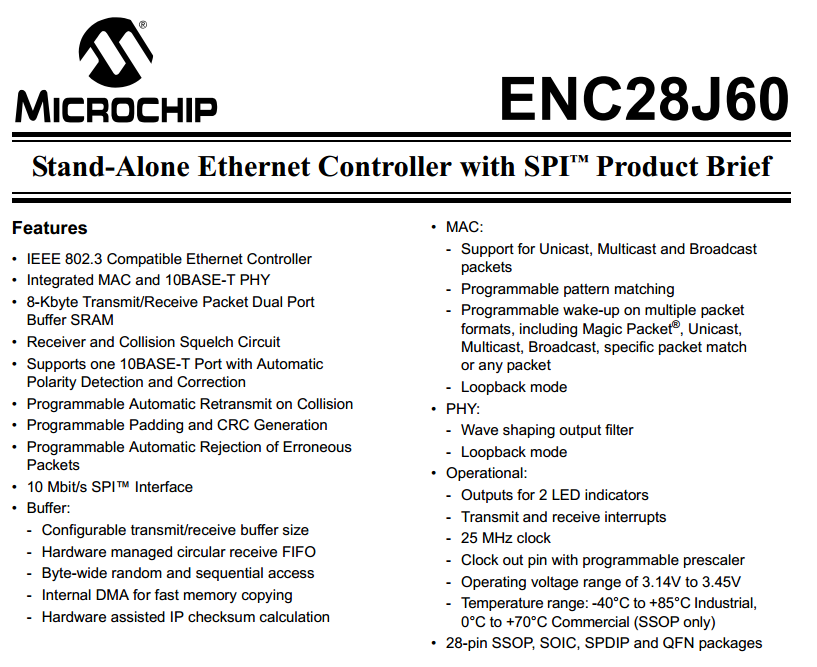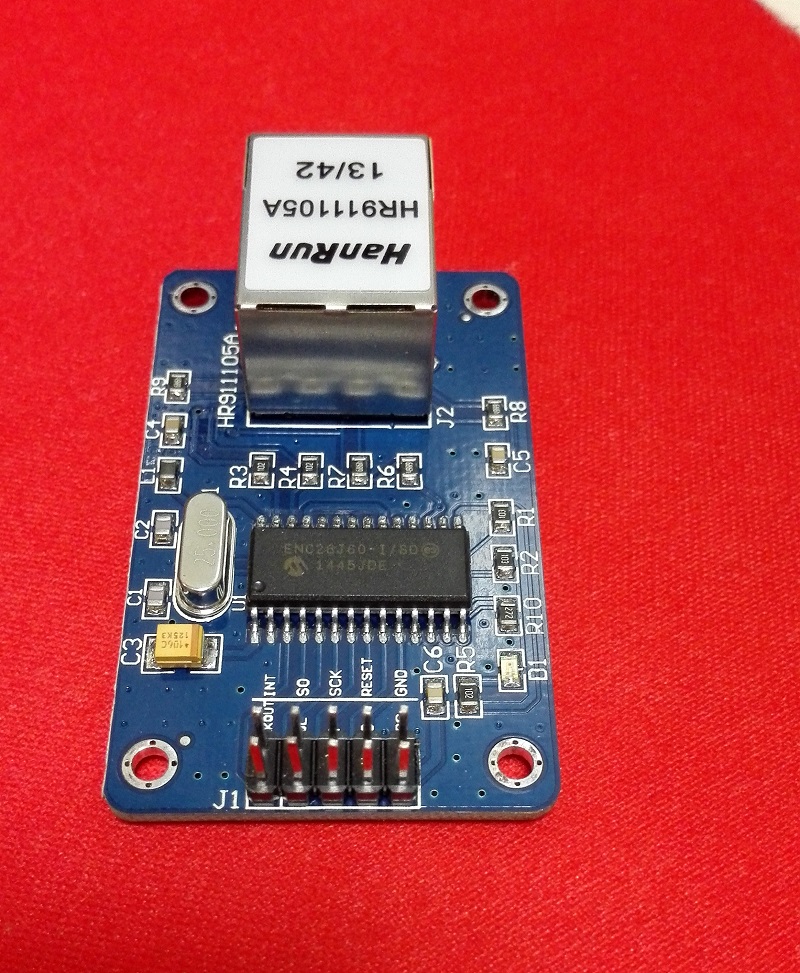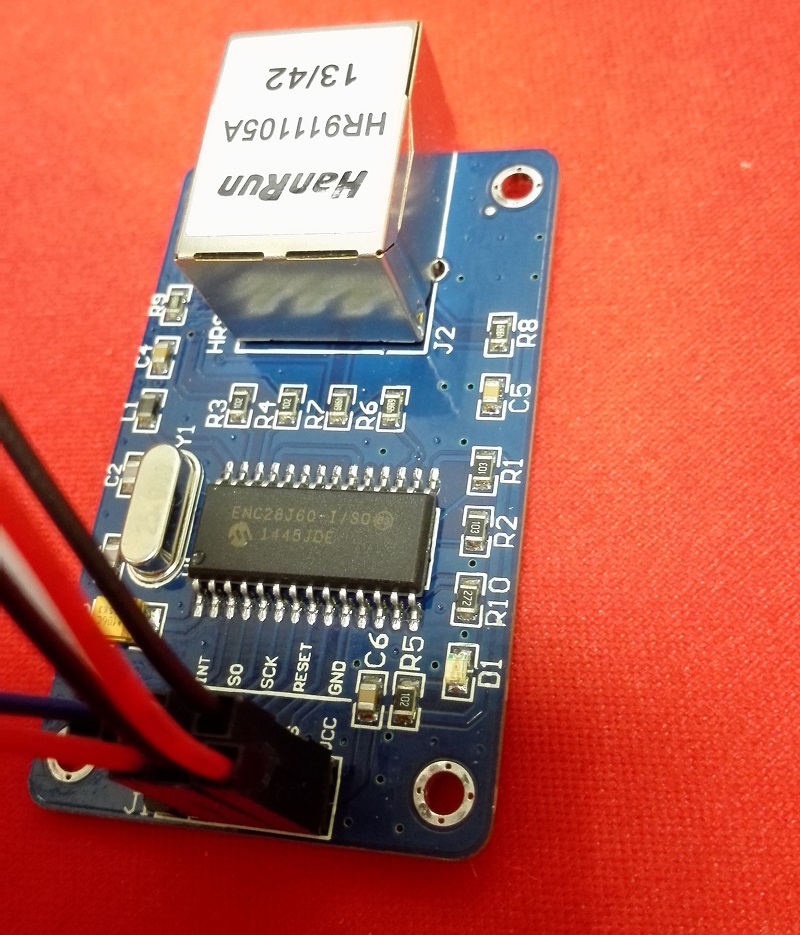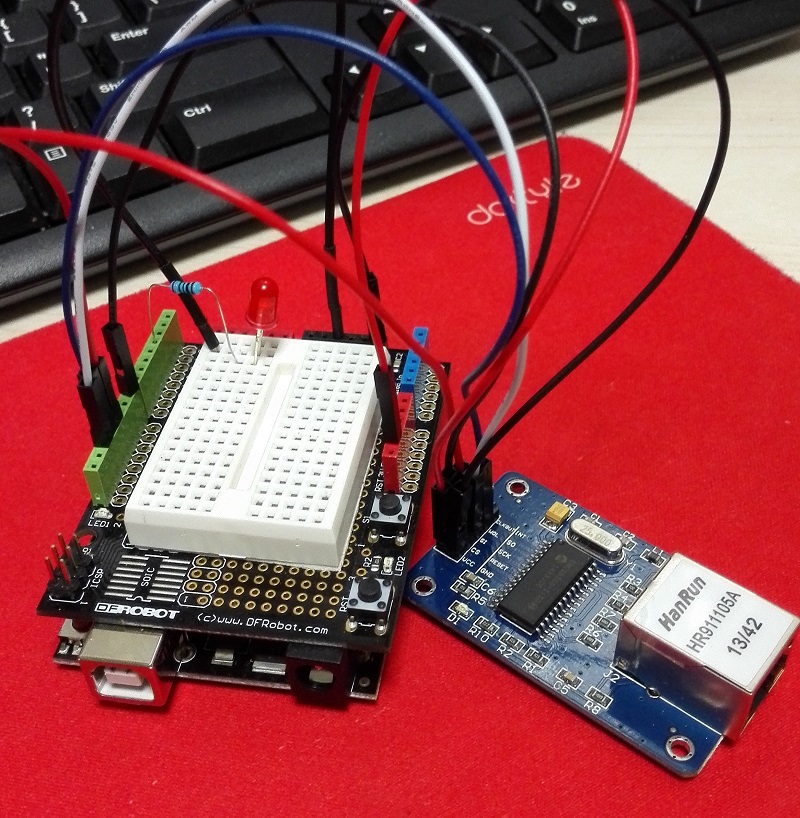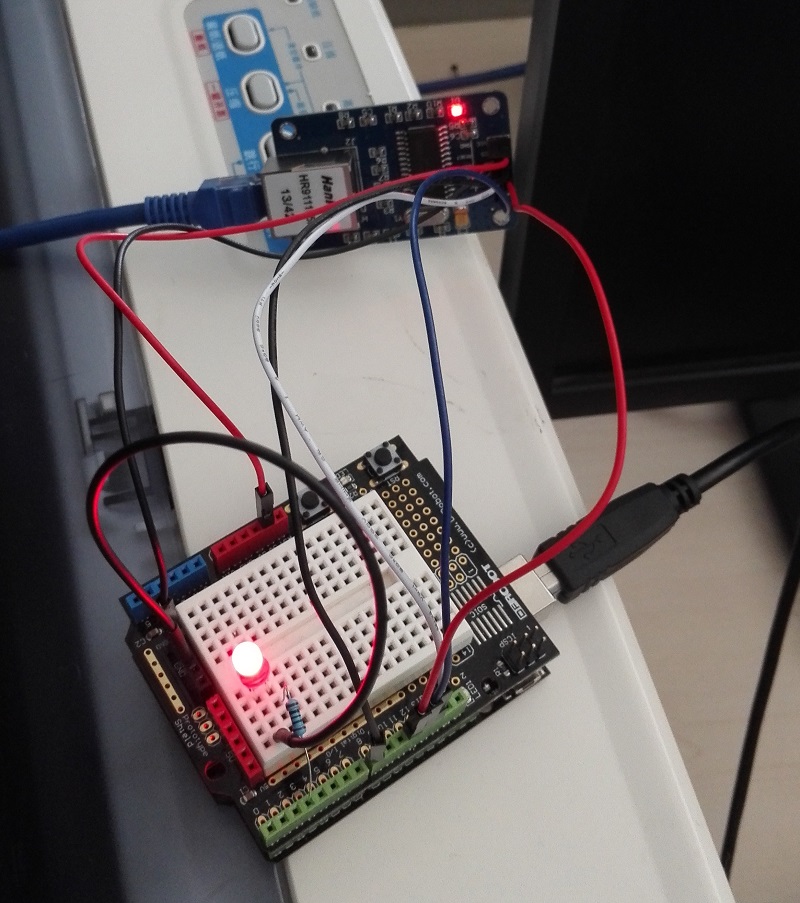在这个万物都可以联网的IoT时代,我们必须掌握单片机访问互联网的技术。
Arduino有一个官方的Ethernet Shield,使用的是W5100方案,这个方案造价比较高,在淘宝网上,国产的仿制品价格在30元左右。我今天介绍的是另外一个廉价的解决方案,这个方案使用的是Microchip的ENC28J60芯片,在淘宝网上,国产的价格基本在10元钱左右。
ENC28J60通过SPI接口提供了10BASE-T以太网的功能:
我拿到的模块:
在GitHub上,有一个很好用的Arduino Library来驱动这个模块:
https://github.com/jcw/ethercard
使用这个Library的步骤如下:
1,下载这个模块的zip包。
2,打开Arduino IDE,选择Sketch — Include Library — Add .ZIP Library,然后选择刚才下载的zip包。
3,在Arduino IDE中,选择File — Examples — ethercard-master ,然后选择一个示例,按照自己的需求修改即可。
我选择的是udpListener这个示例,做了一些修改,可以正常编译运行。
|
1 2 3 4 5 6 7 8 9 10 11 12 13 14 15 16 17 18 19 20 21 22 23 24 25 26 27 28 29 30 31 32 33 34 35 36 37 38 39 40 41 42 43 44 45 46 47 48 49 50 51 52 53 54 55 56 57 58 59 60 61 62 63 |
#include <EtherCard.h> #include <IPAddress.h> #define LED 3 #define STATIC 1 // set to 1 to disable DHCP (adjust myip/gwip values below) #if STATIC // ethernet interface ip address static byte myip[] = { 10,205,48,8 }; // gateway ip address static byte gwip[] = { 10,205,48,1 }; #endif // ethernet mac address - must be unique on your network static byte mymac[] = { 0x70,0x69,0x69,0x2D,0x31,0x32 }; byte Ethernet::buffer[500]; // tcp/ip send and receive buffer //callback that prints received packets to the serial port void udpSerialPrint(unsigned int dest_port, unsigned char src_ip[4], unsigned int src_port,const char *data, unsigned int len) { IPAddress src(src_ip[0], src_ip[1], src_ip[2], src_ip[3]); Serial.println(src); Serial.println(src_port); Serial.println(data); Serial.println(len); if(strcmp(data,"on")) { digitalWrite(LED,1); }else { digitalWrite(LED,0); } } void setup(){ Serial.begin(57600); Serial.println(F("\n[backSoon]")); pinMode(LED,OUTPUT); digitalWrite(LED,0); if (ether.begin(sizeof Ethernet::buffer, mymac) == 0) Serial.println(F("Failed to access Ethernet controller")); #if STATIC ether.staticSetup(myip, gwip); #else if (!ether.dhcpSetup()) Serial.println(F("DHCP failed")); #endif ether.printIp("IP: ", ether.myip); ether.printIp("GW: ", ether.gwip); ether.printIp("DNS: ", ether.dnsip); //register udpSerialPrint() to port 1337 ether.udpServerListenOnPort(&udpSerialPrint, 1337); //register udpSerialPrint() to port 42. ether.udpServerListenOnPort(&udpSerialPrint, 42); } void loop(){ //this must be called for ethercard functions to work. ether.packetLoop(ether.packetReceive()); } |
电路的连接方法如下:
|
1 2 3 4 5 6 7 8 9 10 11 12 13 |
ENC28J60 - Arduino UNO VCC - 3.3V GND - GND SCK - Pin 13 SO - Pin 12 SI - Pin 11 CS - Pin 8 |
更多的API可以参考EtherCard.h文件,里面的注释很丰富和清晰。
我用PHP写了一个简单的客户端程序,用于向Arduino发送数据,来控制Arduino上面的LED,代码如下:
|
1 2 3 4 5 6 7 8 9 10 11 12 13 14 |
<?php $fp = fsockopen("udp://10.205.48.8", 1337, $errno, $errstr); if (!$fp) { echo "ERROR: $errno - $errstr<br />\n"; } else { for(;;){ fwrite($fp, "on"); echo "on\n"; sleep(1); fwrite($fp,"off"); echo "off\n"; sleep(1); } } |
实际连接效果:
插上网线加电实际运行效果:
参考资料:
https://github.com/jcw/ethercard
http://www.microchip.com/wwwproducts/devices.aspx?ddocname=en022889

